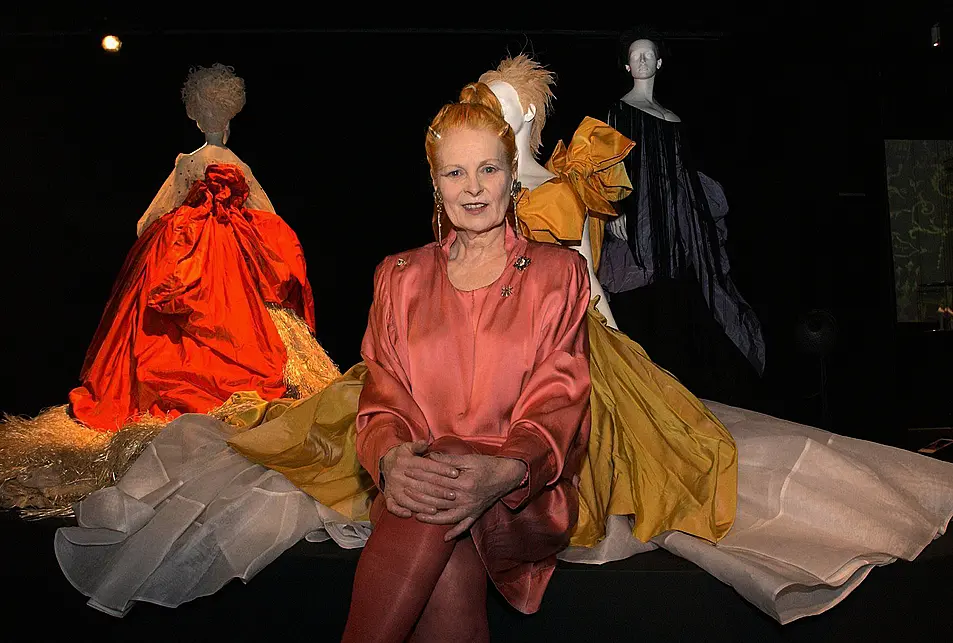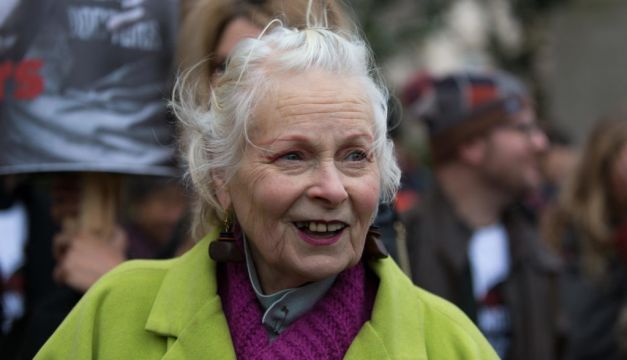Few individuals disrupted fashion quite like Vivienne Westwood, who has died aged 81.
Known for her counterculture aesthetic and commitment to the environment, fashion wouldn’t be where it is today without Westwood carving her unique path.
She continued working until the end of her life, with the announcement on her Instagram page reading: “Vivienne continued to do the things she loved, up until the last moment, designing, working on her art, writing her book, and changing the world for the better. She led an amazing life. Her innovation and impact over the last 60 years has been immense and will continue into the future.”

Tributes have already started pouring in from the world of fashion, music and beyond, with Chrissie Hynde – lead singer of the Pretenders – tweeting: “Vivienne is gone and the world is already a less interesting place.”
Westwood certainly made the world a more interesting place throughout her career – these are some of the major ways she broke boundaries…
She brought a punk aesthetic to high fashion

With her provocative and boundary-pushing designs, Westwood helped set the fashion tone for the punk movement in the 1970s.
She opened a shop with her then-partner Malcolm McLaren on the King’s Road in 1971 – later called SEX – which was frequented by some of the biggest names in punk – including the Sex Pistols, who McLaren managed.
During this time, Westwood’s designs set the tone for punk fashion – think ripped T-shirts, lots of safety pin embellishments and tartan accents. Westwood often used anti-establishment iconography in her clothes – particularly subverting traditional images of the monarchy.
In 1998 she told The Independent: “I was a punk before it got its name. I had that hairstyle and purple lipstick. Girls stopped me in the street and said, ‘Look at the state of that’.”
She made the environment a central focus

The climate crisis might be top of the agenda now, with brands like Stella McCartney using eco-friendly materials and emphasising the need for sustainability in fashion.
But when Westwood started talking about sustainability way back in Eighties, she was seen as something of an outlier. She used traditional tailoring from Savile Row and put great importance on how garments were made – considering the supply chain long before many other major players did.
Her work was always political, and she made her explicit focus the environment in the Noughties. In 2012, Westwood appeared on the catwalk during London Fashion Week in a T-shirt saying ‘climate revolution’, and in 2015 she drove a tank near former prime minister David Cameron’s home to protest fracking.

Some have struggled with Westwood’s message to ‘buy less’, while she still produced multiple new collections a year. However, this was something she was conscious of, with the Vivienne Westwood website reading: “We know there is a contradiction between our activism and the industry we are part of. Fashion creates products which are too often disposable, and which – through their creation, distribution and eventual disposal – can have a disproportionately negative impact on our planet, its wildlife and people.
“We know this and we know we must do better. We have been adapting the way we make our clothes and accessories over the last few years to reflect the growing urgency to change how the industry operates but, in this time of climate crisis, we must go further.”
Westwood continued to post on her blog (climaterevolution.co.uk) up until her death – in November she praised the young activists who threw soup on Vincent van Gogh’s Sunflowers painting, writing: “Young people are desperate. They’re wearing a T-shirt that says: Just Stop Oil. They’re doing something.”
She championed androgyny in fashion

Over the past few years, androgyny has become big business in fashion – championed by the likes of Brad Pitt, who wore a skirt on the red carpet in August.
This arguably wouldn’t have happened without Westwood. From the beginning of her career, she’s pushed the boundaries of gender in fashion, putting men in skirts and women in sharp tailoring.
One clip that’s been going viral on social media since Westwood’s death shows an extremely awkward TV interview when she was introducing her autumn/winter 1988-89 collection, called Time Machine. Westwood had male models wearing pearls, and the interviewer asked – to the giggles of the audience – “Tell me about the twinset and pearls for men, has it caught on? I have not seen a lot of men wearing twinsets and pearls.”
Westwood replied: “You might see your bank manager in five years wearing that” – proving she was far ahead of her time. The audience may have been laughing at Westwood’s designs at the time, but her prediction eventually came true – a string of pearls is current fashion icon Harry Styles’ signature look.
She constantly subverted expectations

Westwood’s fashion was meant to challenge and subvert expectations. She first introduced corsetry into her designs in the 1970s, and it remained her signature style in the decades that followed.
With corsets, Westwood was one of the first designers to experiment with the ‘underwear as outerwear’ trend (one that is still in fashion today), and she used them to make a strong statement for female empowerment and liberation – challenging their original meaning of restriction.
As American designer Marc Jacobs said in his tribute to Westwood: “You did it first. Always. Incredible style with brilliant and meaningful substance.”







